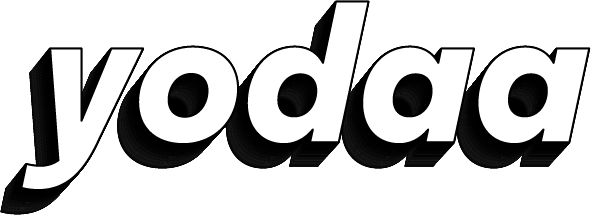Atomic Habits: A Summary
James Clear’s Atomic Habits is considered a seminal work in the domain of self-improvement. The book tackles many concepts that help individuals build better, long lasting habits and stick to them. This summary of the book is designed as a collection of notes taken by a reader, breaking down Clear’s larger narrative into easily digestible points.
Let’s begin with the overarching concepts tackled in Atomic Habits:
- Improving ourselves isn’t as big a task as we think it is. We just need to give ourselves enough time for our efforts to accumulate and make visible changes.
- Consistent small habits make a big difference.
- If you improve by just 1% everyday, you become a 37 times better version of yourself in a year.
- Habits are the compound interest of self-improvement.
The Plateau Of Latent Potential
It’s difficult to build habits because we end up in the ‘Valley of Disappointment’ when results don’t magically appear in a few days, and then give up working on ourselves. The reason behind this is our expectations. We expect things to work out in a far simpler way than reality.
How to keep going when the results aren’t visible early on?
By focusing on systems instead of goals.
Everyone has the same goals -- to become successful or rich. However, not everyone gets there at the same time, and that can be explained by their systems.
- Goals need to be updated every time you achieve them, making them only a momentary change. Thus, it isn’t our results that need to be changed, it’s the systems that lead to those results that need to be fine-tuned.
- Goals restrict your happiness. We either achieve them and look for another goal to run after or we fail and feel terrible.
- To stay genuinely happy, we need to fall in love with the process, not the outcome.
- Goals hinder long-term progress as after every exam/match/checkpoint it feels like there is nothing to do. If it were the system that you were mastering, then irrespective of there being or not being an upcoming exam/match, you’ll keep improving yourself.
There are three layers of behaviour change
Changing the outcome:
What working for goals makes you do. You try to change the result.
Changing the processes:
When you work by a system. You are trying to change your habits.
Changing your identity:
When you change your beliefs, self-image and judgement.
There are two approaches to developing habits. Outcome-based and Identity-based. The latter is more effective as it makes you believe you’re already the type of person you aspire to become. It changes you from the core.
The two-step process of change:
1. Decide the type of person you want to be
2. Prove it to yourself with small wins.
The four step process of building habits
Cue:
Triggers your brain to initiate an action as it wants to be rewarded.
Craving:
The motivational force behind habits. It’s not the habit that we crave, but the change in state it delivers. We don’t want to inhale tar when we smoke, we want the rush in our brain.
Cues are powered by cravings. Without the thoughts, feelings and emotions of the person, cues become meaningless.
Response:
The habit itself. You only get to this if the craving is strong enough to overcome the frictions in the path.
Reward:
The end result the cycle started for.
If at any of these four stages, the intensity is decreased, by ignoring the cue, reducing the craving, making the response difficult, or making the reward less satisfying, habits won’t be formed.
Four laws of behaviour change
1. How can I make it obvious?
2. How can I make it attractive?
3. How can I make it easy?
4. How can I make it satisfying?
Making it obvious
The process of behaviour change starts with awareness, which can be raised through a Habits Scorecard.
List down your daily habits and put a plus, minus or equals to sign next to each of them. These mean ‘good habit’, ‘bad habit’, and ‘neutral habit’ respectively.
To decide what type of a habit it is, ask yourself ‘Does this behaviour help me become the type of person I wish to be? Does this habit cast a vote for or against my desired identity?’ Over time the brain understands our habits and picks on cues without us having to think about it consciously.
You need an implementation intention strategy to pair a new habit with a specific time and location as these are the two most common cues. You can use Habit Stacking to pair new habits with the current ones.
How to do it?
Implementation intention formula: I will [Behaviour] at [Time] in [Location].
The habit stacking formula is: After [Current habit], I will [New Habit].
Example:
Implementation intention formula: I will eat healthy at 10am in the kitchen.
Habit stacking formula: After making coffee for myself, I will eat an apple.
Over here, specificity becomes the game-changer. By putting down ‘read more’ you don’t make yourself commit to the idea. But if you say ‘read after coming back from cycling’ then you are more likely to do it as it's linked to another habit.
Environment matters more than motivation in changing habits. As every habit is initiated by a cue, we need to alter our environment such that cues for bad habits become less visible while cues for good habits clearly stand out. It’s easier to build new habits in a new environment because you aren’t fighting against the old cues anymore.
When trying to break a bad habit, you have to make the cues invisible because the habit feeds on itself. The habit gets cued by the end product of the habit, creating an endless loop. Self-control is a short-term strategy. It’s better to avoid temptations completely than to resist them and test yourself unnecessarily.
Making it attractive
Habits are powered by a dopamine-driven feedback loop. We don’t need the reward for the dopamine, the anticipation of the reward is enough to release the chemical we are constantly chasing. The greater the anticipation, the greater the dopamine spike.
Good habits can be made more attractive by temptation bundling. Use the Habit Stacking strategy again to create something like this:
1. After [Current habit], I will [Habit I need].
2. After [Habit I need], I will [Habit I want].
As humans we are always trying to fit in and belong to the tribe. This makes us adopt the habits that are praised and approved of by our culture. We imitate habits of three social groups; our friends and family, our tribe, and the powerful people with status and prestige. To build the habits we want, we should get involved in cultures where our desired habits are considered normal behavior and there are some similarities between us and the rest of the group. The greater the extent of approval, the more attractive the habit becomes.
A habit is a response to a craving. We predict a feeling that we will receive as a reward for taking an action, that’s what makes us execute the action. So, to get rid of bad habits, we need to make them unattractive. Need to highlight the benefits of avoiding it. By associating bad habits to bad feelings, we make them weaker.
In order to develop new habits, we need to change the way we look at them to facilitate a smoother adoption. Instead of looking at them as things you have to do, look at them as things you get to do. This way, you are grateful about it and thus more likely to make it a habit. Create a motivation ritual by doing something you enjoy, right before a difficult habit.
Making it easy
The most effective form of learning is practice, not planning. Execution is the key to solidifying new habits.
An action needs to be repeated enough number of times for it to become a habit. When it does get promoted to the status of a habit, it will be conducted automatically, as the repetitions have hard wired it into your system.
Humans are a naturally lazy species. We will tilt towards the options that require the least amount of work. We need to create an environment for ourselves where performing the desired action is as easy as possible, by reducing the friction between us and the action, while increasing the friction between us and undesirable actions. These are small changes that make a huge difference. If you place your phone in another room before sleeping, you won’t scroll on it every morning, immediately after waking up. Design an environment that helps you get where you want to be.
We get excited about things very quickly. It’s this level of excitement that makes us go beyond our current potential and do too much on the first day only to never perform the task again. Start small to go long. This can be done using the Two-Minute Rule, which states, “When you start a new habit, it should take less than two minutes to do.”
You’ll find that nearly any habit can be scaled down into a two- minute version:
“Read before bed each night” becomes “Read one page.”
“Do thirty minutes of yoga” becomes “Take out my yoga mat.”
“Study for class” becomes “Open my notes.”
“Fold the laundry” becomes “Fold one pair of socks.”
“Run three miles” becomes “Tie my running shoes.”
The idea is to make your habits as easy as possible to start.
New habits shouldn’t feel like a challenge but we make them challenging nonetheless. This tendency needs to be counteracted upon.
The more you ritualize the beginning of a process, the more likely it becomes that you can slip into the state of deep focus that is required to do great things.
The ultimate way to lock in future behaviour is to automate your habits. The less it is up to your discretion, the less you can digress.
Onetime choices—like buying a better mattress or enrolling in an automatic savings plan—are single actions that automate your future habits and deliver increasing returns over time.
Using technology to automate your habits is the most reliable and effective way to guarantee the right behaviour.
Standardise before you optimize. You can’t improve a habit that doesn’t exist.
Making it satisfying
The human brain evolved to prioritize immediate rewards over delayed rewards.
The Cardinal Rule of Behaviour Change:
What is immediately rewarded is repeated. What is immediately punished is avoided.
Most people know that delaying gratification is the wise approach and it is possible to train yourself to delay gratification—but you need to work with the grain of human nature, not against it. The best way to do this is to add a little bit of immediate pleasure to the habits that pay off in the long-run and a little bit of immediate pain to ones that don’t.
Habits must be tracked to stick with them. This makes the habit obvious, attractive and satisfying all at once. It does so by creating a visual cue that can remind you to act, it’s inherently motivating because you see the progress you are making and don’t want to lose it, and it feels satisfying whenever you record another successful instance of your habit. However tracking may not work for everyone and thus it should only be used as a strategy if it goes with your personality. Just try to keep the streak alive.
Never miss twice. If one day there’s a hiccup and you can’t get to performing the habit, make it a point to do it on the following day no matter what.
Knowing that someone else is watching you can be a powerful motivator.
An accountability partner can create an immediate cost to inaction. We care deeply about what others think of us, and we do not want others to have a lesser opinion of us.
In theory, you can enjoy almost anything. In practice, you are more likely to enjoy the things that come easily to you. People who are talented in a particular area tend to be more competent at that task and are then praised for doing a good job.
Habits are easier when they align with your natural abilities. Choose the habits that best suit you.
Genes cannot be easily changed, which means they provide a powerful advantage in favourable circumstances and a serious disadvantage in unfavourable circumstances.
Genes do not eliminate the need for hard work. They clarify it. They tell us what to work hard on.
The Goldilocks Rule states that humans experience peak motivation when working on tasks that are right on the edge of their current abilities. Not too hard. Not too easy. Just right.
If you hit the Goldilocks Zone just right, you can achieve a flow state.
Flow state is the experience of being “in the zone” and fully immersed in an activity. Scientists have tried to quantify this feeling. They found that to achieve a state of flow, a task must be roughly 4 percent beyond your current ability. In real life it’s typically not feasible to quantify the difficulty of an action in this way, but the core idea of the Goldilocks Rule remains: working on challenges of just manageable difficulty—something on the perimeter of your ability— seems crucial for maintaining motivation.
Variable rewards or not, no habit will stay interesting forever. At some point, everyone faces the same challenge on the journey of self- improvement: you have to fall in love with boredom.
Professionals stick to the schedule; amateurs let life get in the way.
The upside of habits is that we can do things without thinking. The downside is that we stop paying attention to little errors.
Reflection and review is a process that allows you to remain conscious of your performance over time.
The tighter we cling to an identity, the harder it becomes to grow beyond it.
One solution is to avoid making any single aspect of your identity an overwhelming portion of who you are. In the words of investor Paul Graham, “keep your identity small.” The more you let a single belief define you, the less capable you are of adapting when life challenges you.
Life is constantly changing, so you need to periodically check in to see if your old habits and beliefs are still serving you.
A lack of self-awareness is poison. Reflection and review is the antidote.
That’s all for our reader’s notes from Atomic Habits by James Clear. Hope this rapid-fire summary comes in handy when you’re trying to build the next great habit!
Now that you’re taking the first step towards self-improvement, you should probably take a look at your personal finance. Sign up for Yodaa today!



